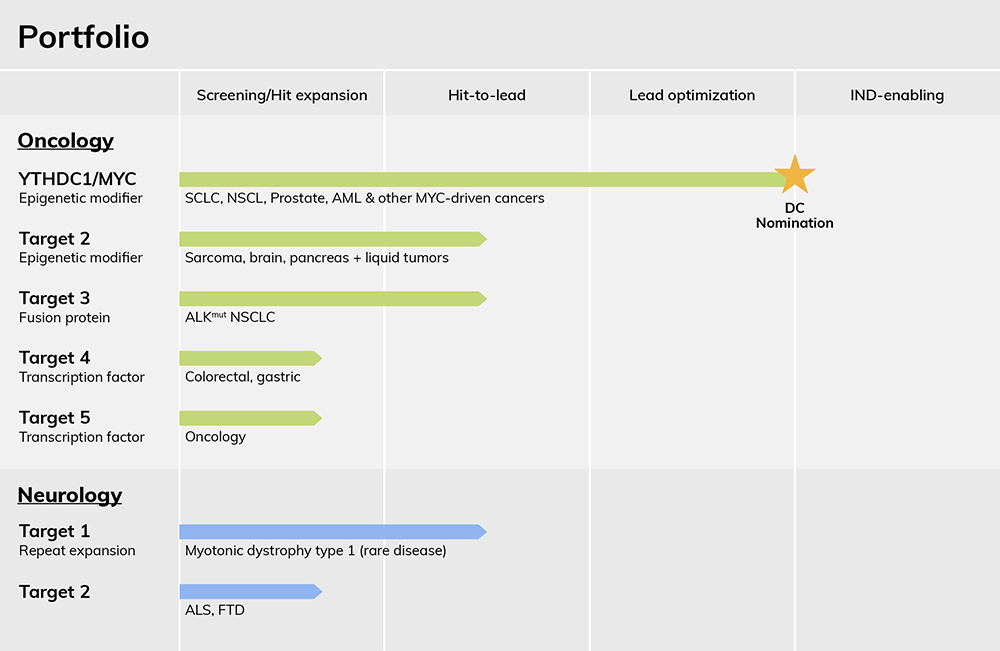We accelerate drug discovery on demand
Using a differentiated approach to solve for the unsolvable — targeting shape shifting intrinsically disordered proteins — we quickly and accurately identify novel and optimal mechanisms of action to drive drug discovery.
Our proprietary platform is centered on identifying chemical matter through molecular screening, followed by optimizing chemical matter using machine learning and artificial intelligence.

Screening Technology
We employ a multidimensional, microfluidics-based high throughput molecular screen to identify hits, determine their binding mechanisms of action, and drive drug discovery.

Machine Learning/AI
Our machine learning/AI engine is foundational to every aspect of our work. Powered by proprietary datasets, we train models that are deeply integrated into our drug discovery pipeline. These models drive insights and decision-making across multiple stages — from target discovery and hit identification to indication prioritization and compound optimization.


